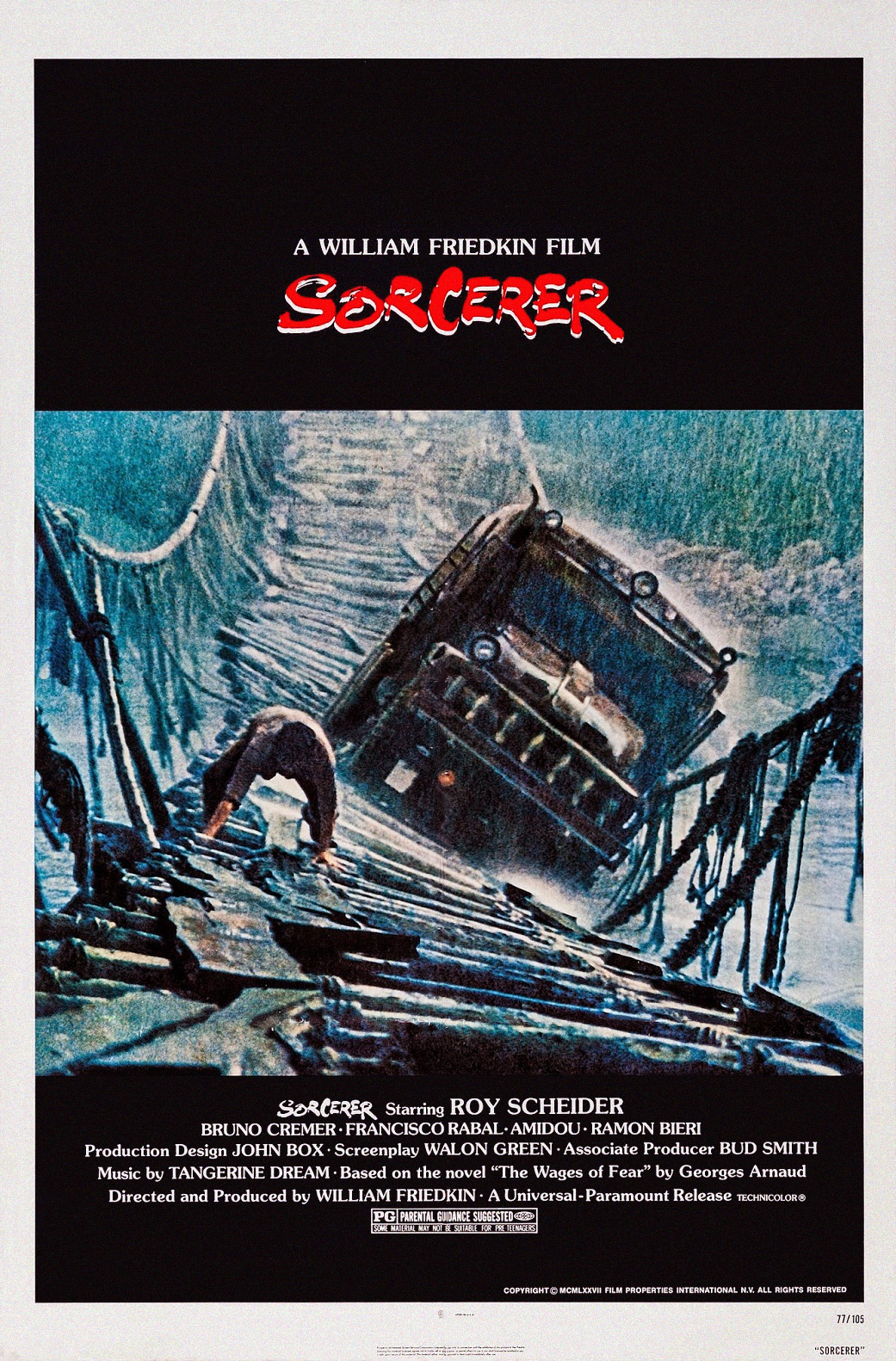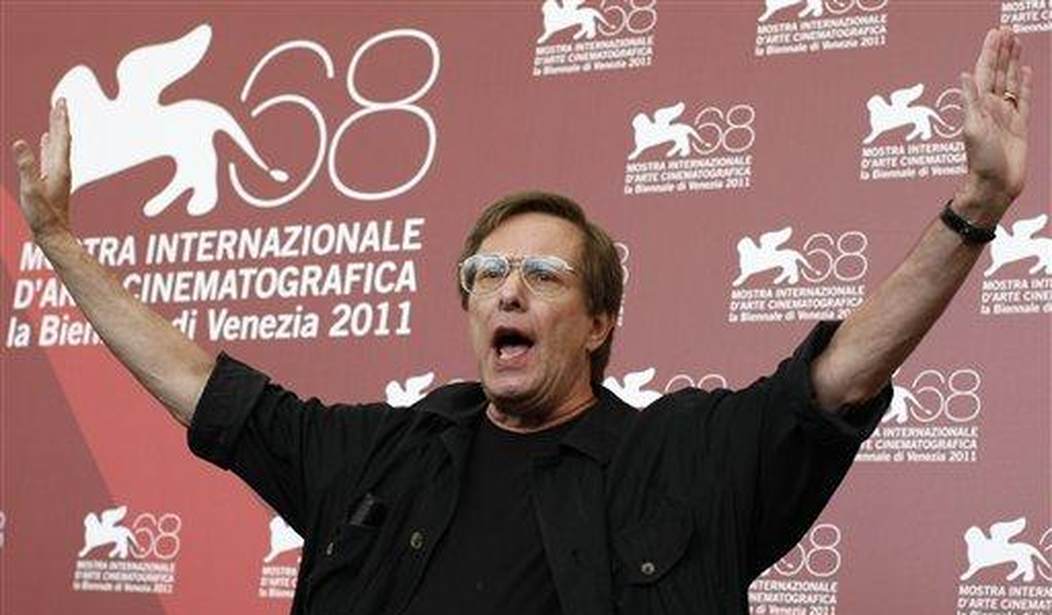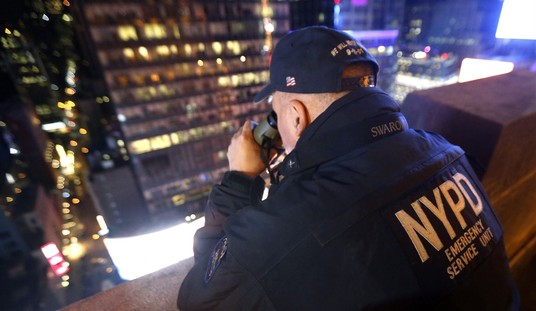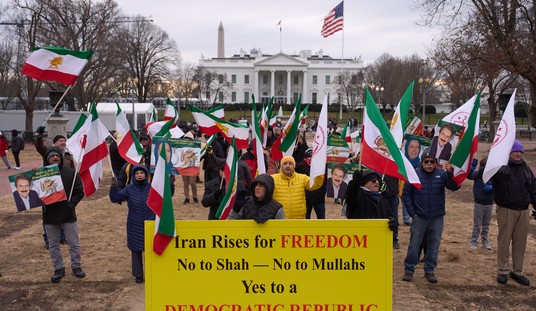Staring at your local multiplex’s lengthy roster of superhero and science fiction movies, it’s easy to forget what an enormous sea change “Star Wars” created in Hollywood in 1977. The new breed of movies were built around family-friendly themes, happy endings, orchestral scores, and dazzling special effects. Out went a string of dark films with murky plots where the grizzled antihero inevitably died at the end.
One of the last of the latter group of films was William Friedkin’s “Sorcerer,” which “Star Wars” utterly demolished at the box office. As a result, it’s a film that was almost completely forgotten until Friedkin’s death at age 87 last month. It was considered a huge bomb initially in the wake of “Star Wars'” genuinely unexpected smash debut and long legs at the box office, but in the years prior to Friedkin’s death, critics began to reappraise Sorcerer, with Breitbart.com’s John Nolte calling it a “masterpiece.”
The film’s quality lies somewhere between those two extremes. It was one of the last films of the Hollywood auteur era of the late ‘60s and ‘70s, before “Star Wars” and “Jaws” created the template for audience-pleasing popcorn movies, and studio executives became increasingly reluctant to give directors not named Spielberg, Lucas, Kubrick, Eastwood, and Allen the final cut on a movie.
As Peter Biskind wrote in his 1998 tale of the revolutions in Hollywood that occurred in the late ‘60s and then a decade later, “Easy Riders, Raging Bulls,” the ballooning budget of “Sorcerer” and its shooting time going out of control prefigured Michael Camino’s even larger disaster in 1980 on “Heaven’s Gate.” “Sorcerer” began as a modestly budgeted (at $2.5 million) remake of the hit 1953 French movie “The Wages of Fear,” to be shot while Friedkin was prepping a film about the Bermuda Triangle, with space aliens at the heart of the oceanic mysteries. Unfortunately, he discovered that Spielberg was shooting “Close Encounters of the Third Kind.” Friedkin then learned that Francis Ford Coppola was shooting “Apocalypse Now” in the Philippine jungles, so he decided to swap “Wages of Fear’s” dry and dusty mountains for the jungles of South America. As a result the budget ballooned to $22.5 million, ten times its original amount. (Which, incidentally, was double the budget of “Star Wars.”)
No Compromises, Not Even to Land Steve McQueen
Biskind noted that coming off of huge hits with “The French Connection” and “The Exorcist,” Friedkin’s ego during the planning and shooting of “Sorcerer” grew to enormous proportions, even for Hollywood:
Friedkin was having a hard time lining up a cast. He gave the script to Steve McQueen. McQueen asked Friedkin, “This is the best script I’ve ever read. Can you make this movie in the U.S.?”
“Oh no, the location’s real important, it’s gotta be believable.”
“I’m worried about my marriage to Ali [MacGraw]. If I go outta the country for three months, I won’t have a marriage when I come back. Can you write in something for her?”
“No, I can’t write in a part for her. You told me it was the best script you ever read and there’s no part for a woman in there.”
“Would you consider making her associate producer so she can be with me?” “No, I wouldn’t consider that.” After McQueen turned him down, Friedkin actually began shooting without a lead. Eventually, Roy Scheider, a veteran of The French Connection and hot from Jaws, took the role.
Friedkin would later consider that a costly mistake on his part. Having McQueen onboard could have brought well-known European actors such as Marcello Mastroianni, eager to work with the legendary American superstar, but Scheider did not have that level of pull:
Had Steve McQueen starred in the film as was originally intended, Marcello Mastroianni and Lino Ventura would have been cast in the two supporting roles played by Bruno Cremer and Francisco Rabal. However, after McQueen backed out, Mastroianni and Ventura also did, since they refused to take second billing to any actor besides McQueen.
Wages of Sorcerer
Unlike the original “Wages of Fear,” Friedkin’s “Sorcerer” begins with a very long preamble to introduce his starring cast, and explain what has driven (okay, pun slightly intended) their characters into such disastrous circumstances. Scheider plays a smalltime mafioso in northern New Jersey (future home to Tony Soprano’s crews) who robs the collection till from a Catholic priest, only to discover the padre’s brother is a mob boss and wants revenge. French actor Bruno Cremer plays a Parisian on the run after being accused of stock market fraud, facing a rapidly collapsing financial empire (and worse). Moroccan-French actor Amidou (Hamidou Benmessaoud) plays a Palestinian terrorist who blows up a bank and is on the run from the Israeli authorities. Spanish actor Francisco Rabal plays a political assassin.
In his four-star review last year, Ben Miller of “Cinema Scholars” wrote:
The four men find themselves in a remote Columbian village. Each live in extreme poverty, earning meager salaries. Following sabotage of the local oil well, the company needs to extinguish the fire using dynamite. The remote location of the depot and the instability of the nitroglycerine necessitates the use of trucks to make the 200+ mile journey. Enticed by a payday, the four men agree to transport the explosives.
As the four men assemble for the journey, they face a number of internal conflicts and environmental hazards. Will they complete the journey, or kill each other along the way?
Once “Sorcerer” gets past its long introduction to the men who will become the drivers of the nitroglycerin trucks, it follows the plot beats of “Wages of Fear” pretty faithfully:
- Hard men trapped in craptacular Southern American town and can’t afford to escape.
- Huge fire on nearby oilrig can only be put out with nitroglycerin.
- Local American oil company manager offers huge reward if the drivers survive what is otherwise a very likely suicide mission.
- Perilous action as trucks head out onto nigh-impassible roads.
However, “Sorcerer” scales up “Wages of Fear’s” spartan black and white cinematography and its perils. As its poster highlights, there’s a massive amount of tension as the two trucks attempt to cross impossibly rickety bridges with death awaiting below for their drivers and spotters.
I’d go further, but I really don’t want spoil the ending of the film, but there is a fun “when worlds collide” moment below the poster.

This Is the Way (into Hell)
Perhaps as a way of paying tribute to “Sorcerer,” for the second season of Disney’s “The Mandalorian,” the show’s producers created an episode where Mando and a rebel played by comedian Bill Burr have to drive a highly dangerous science fiction substitute for nitro through the jungle to get to an Imperial processing facility they want to break into. Substitute futuristic looking vehicles for “Sorcerer” and “Wages of Fear’s” mid-20th century trucks, and much of the mechanics of the plot remain the same: highly volatile material, trucks must be driven steady over near-impassible terrain, one crew will die. We know “The Mandalorian” has had another season, so it’s not going to be his vehicle. (See also: red-shirt syndrome on the original “Star Trek.”) But it’s a tense episode nonetheless, particularly for the many audience members who’ve never seen either of its source material:
Titled “Chapter 15: The Believer,” it concerns the title character heading off with a small band of outlaws including Boba Fett (Temuera Morrison), Fennec Shand (Ming-Na Wen) and the prisoner Migs Mayfeld (Bill Burr) to the mining planet of Morak. In order to get Moff Gideon’s coordinates to track down baby Grogu, Mando and Mayfeld hijack an imperial transport truck containing the explosive mineral rhydonium, which like the nitro in Sorcerer is highly volatile. Instead of a flask filled with water on their dashboard as in Friedkin’s film they have a very sci-fi digital readout that tells them when the material is too shaken up. Even as local pirates explode other trucks in front of them and eventually attack their own vehicle, Mayfeld cannot speed up or it could de-stabalize the rhydonium and blow themselves up.
The roughly ten-minute sequence in the 35-minute episode is as heart-pounding and Star Wars-y as any of the films in the Lucasfilm canon, even outpacing similar sequences in Solo: A Star Wars Story by the gritty atmosphere and clear stakes that writer/director Rick Famuyiwa expertly creates. It’s the perfect Star Wars version of Sorcerer, though, and owes a great debt to Friedkin’s film which it wears on its sleeve, proudly.
The Changing of the Guard
The episode was a nice way to pay tribute to a unique movie that was utterly pulverized by the runaway success of “Star Wars,” and the endless sequels and spinoffs that have been arriving on a regular basis since 1977. According to Peter Biskind in “Easy Riders, Raging Bulls,” Friedkin never knew what hit him:
The Sorcerer trailer Bud Smith cut played in front of Star Wars at the Chinese Theater. Says Smith, “When our trailer faded to black, the curtains closed and opened again, and they kept opening and opening, and you started feeling this huge thing coming over your shoulder overwhelming you, and heard this noise, and you went right off into space. It made our film look like this little, amateurish piece of sh*t. I told Billy, ‘We’re f***ing being blown off the screen. You gotta go see this.’”
Friedkin went with his new wife, French actress Jeanne Moreau. Afterward, he fell into conversation with the manager of the theater. Nodding his head toward the river of humanity cascading through the theater’s doors, the man said, “This film’s doing amazing business.”
“Yeah, and my film’s going in in a week,” replied Billy nervously.
“Well, if it doesn’t work, this one’ll go back in again.”
“Jesus!” Friedkin looked like he had been punched in the stomach. He turned to Moreau, said, “I dunno, little sweet robots and stuff, maybe we’re on the wrong horse.” A week later, Sorcerer did follow Star Wars into the Chinese. Dark and relentless, especially compared to Lucas’s upbeat space opera, it played to an empty house, and was unceremoniously pulled to make room for the return of C3PO et al.
Sorcerer was a major disaster, grossing only a piddling $9 million worldwide. Friedkin was dumbstruck. He could not believe the public didn’t like it. He could not believe the critics didn’t like it. Says Smith, “He probably put more into Sorcerer than any other film he’d ever done—time, energy, labor, and thought.” The picture is punctuated by some striking images, but it is self-consciously arty and pretentious, ironic in view of the way Friedkin had once put down film art in favor of commercialism, derided Coppola and Bogdanovich for their artistic aspirations.
This was the moment when everything changed in Hollywood. Dark films that employed the existentialism and filming techniques of the French nouvelle vague were out after a decade’s run in Hollywood. Spaceships, and later superheroes, would come to dominate the industry to this day. “Sorcerer” isn’t a masterpiece, and there is a definite lack of robots and spacecraft, but even so, there’s plenty of suspense and nail-biting tension throughout.










Join the conversation as a VIP Member